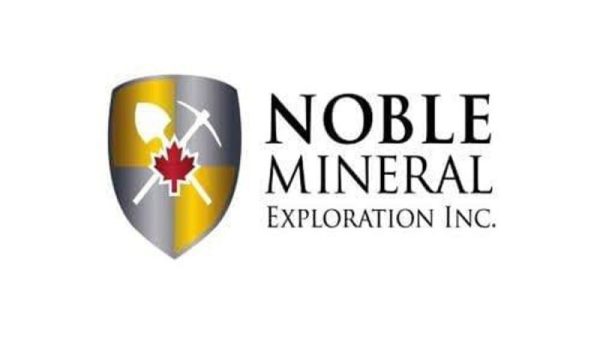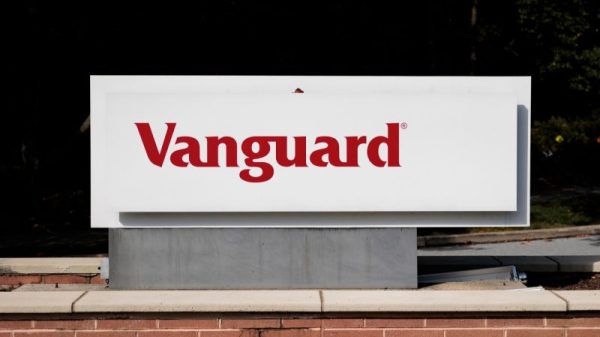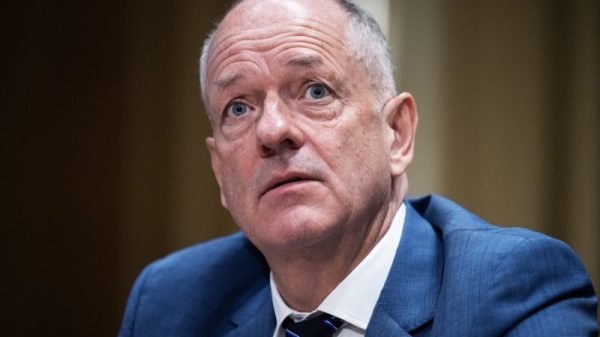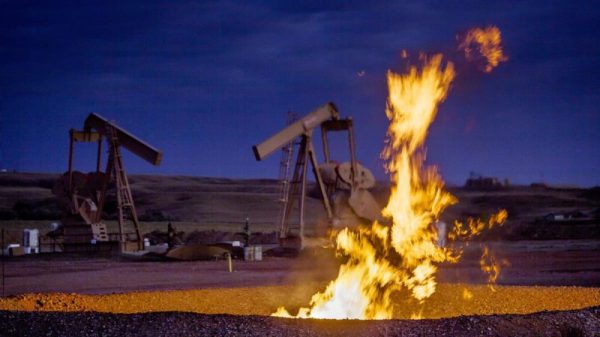Overview
Cosa Resources (CSE:COSA, OTCQB: COSAF), is a Vancouver-based uranium exploration company with a portfolio of highly prospective assets in Saskatchewan’s Athabasca Basin region.
Cosa’s five uranium projects comprise more than 100,000 hectares of land within or proximal to Saskatchewan’s Athabasca Basin. Each project captures portions of highly prospective northeast trending uranium corridors and district-scale structural corridors, such as the Cable Bay and Grease River Shear Zones and the Larocque Trend.
The Athabasca Basin region is well known for hosting some of the world’s largest and highest-grade uranium deposits within these prominent and continuous magnetic low corridors; examples include Cameco’s McArthur River mine and IsoEnergy’s Hurricane deposit. All of Cosa’s projects are considered underexplored and boast strong potential to host world-class uranium deposits.
Supported by a team of technically focused and successful geologists and mining executives, Cosa believes that a combination of new ideas and aggressive exploration in underexplored areas has the potential to yield the next Tier 1 uranium discovery.
Left to Right: Steve Blower, Andy Carmichael, Craig Parry, and Justin Rodko. Recipients of the AME Colin Spence Award for 2022.
Cosa has strategically assembled a management team with a history of success in the Athabasca Basin. With well over a century of combined uranium experience, Cosa’s management team has been involved with several uranium discoveries in recent years. Chairman Steve Blower was part of the discovery team behind 92 Energy’s Gemini zone, IsoEnergy’s Hurricane deposit, and Denison’s Gryphon deposit. For his role in the Hurricane discovery, he was co-recipient of the AME 2022 Colin Spence Award for excellence in global mineral exploration, alongside fellow Cosa team members Andy Carmichael, Justin Rodko and Craig Parry.
Uranium Markets
With the world’s shift away from fossil fuels, nuclear power has been gaining popularity in recent years. As of now, there are around 440 nuclear reactors globally, consuming roughly 62,500 tonnes of uranium (tU) per year, and the demand for the metal is only growing as more reactors come online. This has created a consistent and growing need for new sources of uranium to keep up with the increasing demand.
This rise in long-term demand for uranium has resulted in a growing spot price, with uranium prices increasing by 14.43 percent since the beginning of 2022. Spot prices peaked in March/April 2022 as a response to the Russian invasion of Ukraine and have since dropped, although they remain in a long-term uptrend beginning early in 2018. Given the current geopolitical climate in pursuit of cleaner power and reduced carbon emissions, nuclear power has become increasingly popular as an alternative to fossil fuels. It’s clear that new sources of uranium are necessary to meet the growing demand for the metal, which is now included as one of the Canadian Government’s 31 critical minerals.
In addition to a strong focus on uranium exploration and commitment to ESG practices, Cosa Resources also prioritizes strong corporate governance. The company believes that effective corporate governance is essential for building and maintaining trust with investors and stakeholders, as well as ensuring the long-term success and sustainability of their business. To support this goal, Cosa Resources has established a strong board of directors with diverse backgrounds and expertise. The board provides oversight and guidance on key strategic and operational decisions, and they are responsible for ensuring that the company operates in compliance with all relevant laws, regulations, and ethical standards. Cosa has additional support from Inventa Capital Corporation, a privately held merchant bank that specializes in financing and supporting companies that explore for and develop mineral deposits to fuel and support global energy and technology needs.
Company Highlights
More than 100,000 hectares of uranium assets proximal to the Athabasca Basin – the heart of the Canadian uranium mining sectorProjects near to or within highly prospective northeast trending uranium corridors and district-scale structural corridors such as the Cable Bay and Grease River Shear Zones and the Larocque Trend100-percent-owned Ursa property covers a large portion of the underexplored Cable Bay Shear Zone uranium corridorExpansion of 100-percent-owned Orion Property to 9,000 hectares via two new claims spanning 5,119 hectaresA management team comprised of technically focused and successful geologists and mining executives with a history of success in the Athabasca Basin
Key Projects
Cosa’s uranium projects comprise over 100,000 hectares of land between five properties located within or proximal to Saskatchewan’s Athabasca Basin. All five projects capture portions of highly prospective northeast trending uranium corridors and district-scale structural corridors such as the Cable Bay and Grease River Shear Zones and the Larocque Trend. The Athabasca Basin is well known for hosting some of the world’s largest and highest-grade uranium deposits within these prominent and continuous magnetic low corridors; examples include Cameco’s McArthur River mine and IsoEnergy’s Hurricane deposit.
Only 18 historical drill holes have been completed on Cosa’s projects, 16 of which were completed on the Ursa project which boasts over 60 kilometers of strike length of the Cable Bay Shear Zone and is still considered severely underexplored. Ursa has not been drilled since 2002 and the most recent drilling on any Cosa project was completed on the Helios grounds in 2007. All of Cosa’s uranium projects are 100 percent owned.
Cosa Resources Corp. Athabasca Basin Uranium Exploration Projects
Ursa
The Ursa project comprises 57,000 hectares and is located approximately 45 kilometers west of Cameco’s McArthur River uranium mine. The property covers more than 60 kilometers of strike length of the Cable Bay Shear Zone, a structural corridor with known uranium occurrences. Much of the strike length is completely untested, and Ursa is considered significantly underexplored given the proven existence of geophysically conductive trends, structurally disrupted sandstone and basement lithologies, and elevated uranium. Ursa and the Cable Bay Shear Zone represent one of the last remaining highly prospective and significantly underexplored analogy to some of the better-known uranium corridors such as the Larocque and Collins Bay trends. The depth of the sub-Athabasca unconformity is expected to range between 600 and 975 meters.
Ursa Project
Helios
The 12,835-hectare Helios project is located 14 kilometers south of the northern rim of the Athabasca Basin. The project comprises two target areas:
The northern target area covers the extension of two sub-parallel conductive trends flanking a central magnetic high as indicated by a 2005 airborne electromagnetic survey. The Ware’s Uranium Occurrence, located roughly six kilometers on strike and to the north of Helios, is a zone of outcropping sandstone cut by uranium-bearing fracturing. Limited follow-up drilling determined that fracturing penetrated the full thickness of the Athabasca sandstone which indicates the potentially significant structural corridor. No drilling has tested this system on the Helios project, though a 2007 drill hole was completed roughly four kilometers north of Helios which intersected favorable illitic and chloritic clay alteration signatures. Depth to the unconformity at the northern target area is expected to be between 375 and 500 meters. The southern target area covers 15 kilometers of the Grease River Shear Zone (GRSZ), a major east-northeast trending basement structure corridor; the Fond du Lac uranium deposit, located 29 kilometers northeast of Helios, is interpreted to be related to this corridor. Drilling immediately east of Helios had identified a sub-Athabasca unconformity offset of up to 30 meters. Only two drill holes have been completed on the property, yet historical electromagnetic and DC-resistivity surveys have defined approximately five kilometers of basement-hosted conductivity associated with the GRSZ, with the potential for another 10-kilometer extension to the west-southwest. The depth of the unconformity at the southern target area is interpreted to be between 445 and 850 meters.
Helios Project
Orion
The Orion property is located approximately 34 kilometers northwest of the McArthur River uranium mine and is an interpreted extension of Larocque uranium corridor and a splay off the Cable Bay Shear Zone. The property is characterized by a north-south zone of low magnetic susceptibility with historical electromagnetic conductors that wraps around to the east at its north end, implying prospective structural complexity. The property has never been drilled and nearby historical drilling suggests the depth to the sub-Athabasca unconformity is between 750 and 900 meters.
Competitive staking in September 2023 added two claims to the property totaling 5119 hectares and covering an additional 10 kilometres of prospective magnetic low strike length. The newly added strike includes the interpreted southern extension of the Larocque uranium trend, host to the Hurricane uranium deposit and the Larocque Lake and Alligator Lake uranium zones (Figure 2). Staking of the new claims was largely driven by preliminary interpretation of results from Cosa’s July 2023 MobileMT airborne survey over the Ursa and Orion properties.
Charcoal
Charcoal comprises over 21,000 hectares and is located 52 kilometers northeast of Cameco’s Rabbit Lake – Eagle Point mine operation. The property sits within a prominent magnetic low anomaly that extends northeast from the mine. Historical assessment records indicate the presence of numerous airborne electromagnetic conductors, possibly indicating the presence of graphitic metasediments and associated brittle faults which are often associated with uranium mineralization in the Athabasca Basin. The property is eight kilometers up-ice from a historical radioactive boulder field. As Charcoal is beyond the basin edge, there is no overlying sandstone.
Castor
Castor, like Charcoal, lies beyond the Athabasca Basin edge and therefore has no overlying sandstone cover. The property is located 55 kilometers north of Cameco’s Rabbit Lake – Eagle Point uranium mine. Castor is located at the intersection of a prominent northeast-trending magnetic low anomaly that is roughly parallel to the Eagle Point – Collins Bay magnetic low at Charcoal and an east-west trending magnetic low anomaly.
Charcoal and Castor Projects
Management Team
Keith Bodnarchuk – President, CEO, and Director
Keith Bodnarchuk is a professional geoscientist with more than 15 years of experience in exploration, mining and capital markets. He led strategy and corporate development for IsoEnergy and was responsible for the acquisition and divestment of several projects. Bodnarchuk has previously worked as project geologist at Denison Mines with a focus on uranium exploration in North America and Africa.
Steve Blower – Chairman
Steve Blower is a professional geologist with over 30 years of experience in the minerals industry including mine geology, resource estimation, and exploration for a variety of commodities. For the past 15 years, as president and CEO of Pitchstone Exploration Ltd., VP exploration for Denison Mines Corp., VP exploration for IsoEnergy Ltd., and a consultant/director of 92 Energy, he has been involved in three uranium discoveries in the Athabasca Basin. Earlier in his career, Blower was a mine geologist at the Huckleberry and Similco open-pit copper mines in British Columbia. Blower holds a BSc in geological sciences from the University of British Columbia and an MSc in geological sciences from Queen’s University.
Andy Carmichael – VP of Exploration
Andy Carmichael has nearly 20 years in mineral exploration, most of which focused on uranium exploration and resource delineation in the Athabasca Basin, Hornby Basin, Colorado Plateau and Namibia. Carmichael has served as VP of exploration for IsoEnergy, where he was a key member for the discovery and completion of the initial mineral resource for the Hurricane deposit, currently the world’s highest grade indicated mineral resource in uranium. Carmichael has worked at the Triple R, Phoenix, Gryphon and J-Zone deposits, and has a BSc with honours in geology from Saint Mary’s University.
Darren Morgans – Chief Financial Officer
Darren Morgans is a Canadian CPA and Australian CA, and has been a practicing finance professional since 1995. He has worked with Canadian and Australian publicly listed resource companies for 25 years. Morgans is currently CFO of Velocity Minerals, a gold explorer and developer with assets in Bulgaria. Prior to Velocity, Morgans was the CFO of Perpetua Resources Corp. (formerly Midas Gold Corp.). At Perpetua, he assisted with its IPO in 2011 and subsequently raised over C$200 million in equity, convertible debt and royalty financings, to advance the Stibnite Gold Project from a small resource to a Feasibility Study with almost 5 million oz in reserves.
Wes Short – Executive VP and Director
Wes Short has worked in the natural resources sector for the past eight years and was a founding member of the IsoEnergy team as manager of corporate affairs and corporate secretary until 2021, and previously held the role of corporate secretary with NxGold from 2018 until 2020 as well as its successor, Consolidated Uranium, until 2021. Short holds a Bachelor of Commerce in finance from the University of Northern British Columbia.
Justin Rodko – Corporate Development Manager
Justin Rodko is a professional geoscientist with nearly a decade of uranium exploration experience in Saskatchewan and Nunavut. Rodko is an original member of the IsoEnergy exploration team where he played a critical role in the discovery and completion of the initial mineral resource for the Hurricane zone. Rodko was previously a senior geologist at IsoEnergy and has worked at Orano’s (Areva) Kiggavik project in Nunavut as well as the Waterbury Cigar and Waterbury UEM projects, and at NexGen’s Arrow deposit in the Athabasca Basin.
Craig Parry – Advisor
Craig Parry has over 20 years in the resource sector and is a co-founder and partner of Inventa Capital, a private natural resources investment company. Parry also serves as chairman of Vizsla Silver, director (formerly chairman) at Skeena Resources, executive chairman at Vizsla Copper, and has previously served as CEO of IsoEnergy. Parry is a founding member of both IsoEnergy and NexGen Energy and has also led exploration teams exploring iron core, copper, diamonds, coal and bauxite in Australia. He was principal geologist for the Kintyre uranium project pre-feasibility study, holds an Honours Degree in geology, and is a member of the AusIMM.
Ted Trueman – Director
Ted Trueman serves as a director of Cosa and is a professional engineer with over 50 years of diverse experience in mining. Trueman has led several exploration teams that have made discoveries in uranium, gold and silver. He previously served as CEO of Pitchstone Exploration Ltd. prior to being acquired by Fission Energy Corp.
Janine Richardson – Director
Janine Richardson serves as a director of Cosa and is a CPA with over 30 years of finance experience in the mining industry. Richardson previously served as chief financial officer of IsoEnergy and CFO of Consolidated Uranium. She graduated from McMaster University with a Bachelor in Economics and has a diploma in accounting from Wilfrid Laurier University.
* Disclaimer
The scientific and technical information on this website has been prepared in accordance with the Canadian regulatory requirements set out in National Instrument 43-101 (Standards of Disclosure for Mineral Projects) and reviewed and approved by Andy Carmichael, VP Exploration for Cosa Resources Corp. and a ‘qualified person’ as defined by NI 43-101. This profile refers to neighboring properties in which the Company has no interest. Mineralization on those neighboring properties does not necessarily indicate mineralization on the Company’s properties.







































